the education of henry
American History Tour
Day 10: Beacon Hill, Trinity Church, and Boston Public Library
2023-09-23
Today was our second day in Boston and we went on another tour, this one in the Beacon Hill neighborhood, learning about the area during the lead-up to the Civil War and the areas African American history, including its participation in the Underground Railroad. On our way down to Boston Common to catch our tour at the Prescott House, we stopped at Harvard to see if we could find the plaque for Thomas Dudley, my great (x11) grandfather, and one of the founders of the school. Alas, it was locked up, so we could not see it. But we found the gate, and a picture of the inscription on Dudley's Wikipedia page.
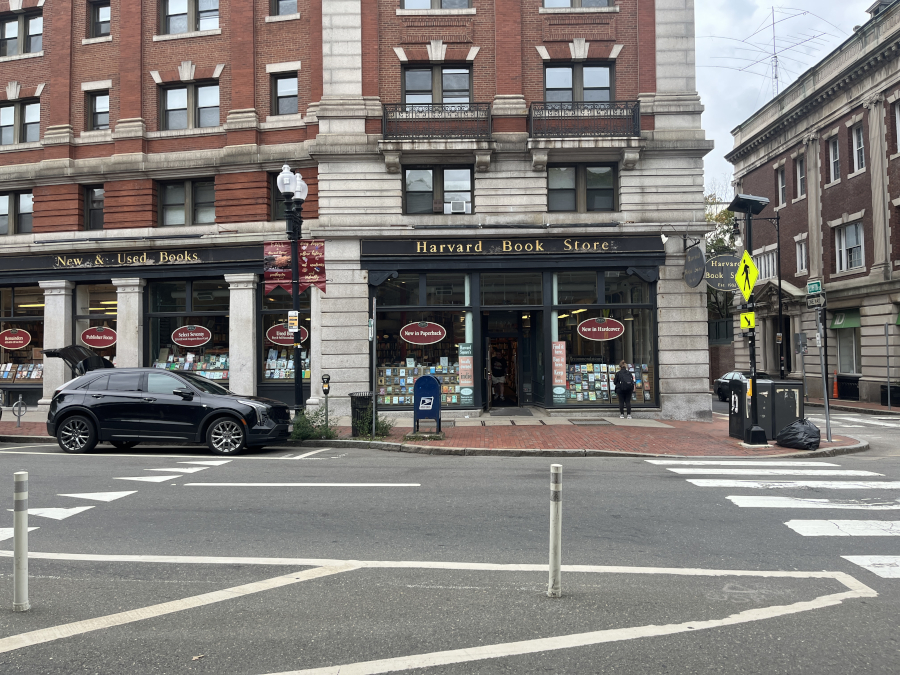
The Harvard Book Store - never thought I'd be here.
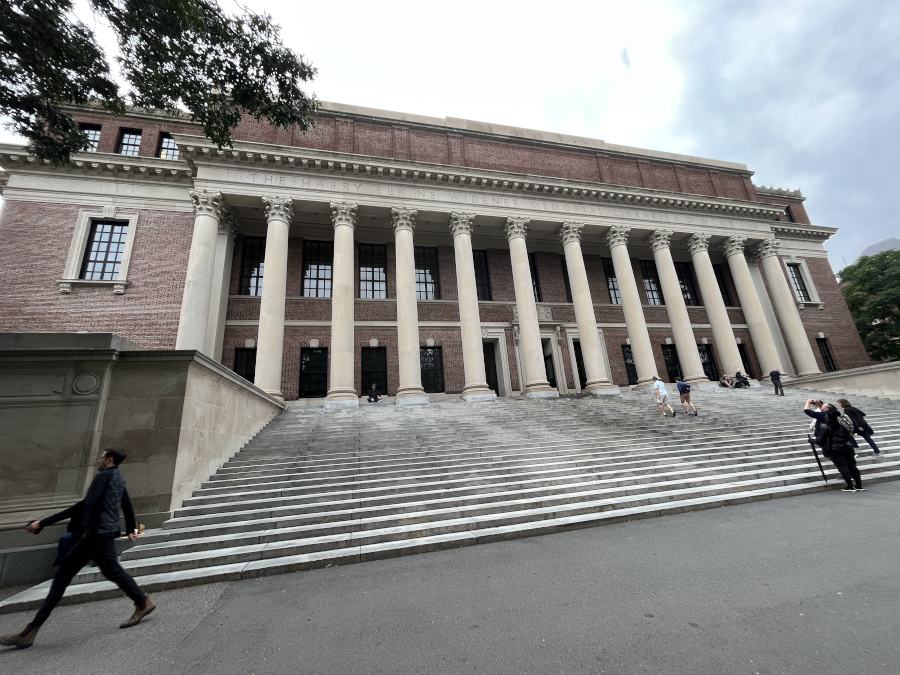
The Widener Library - Dad was impressed with this one. I guess it's kind of a big deal.

Nice little green space - lots of those on the campus.
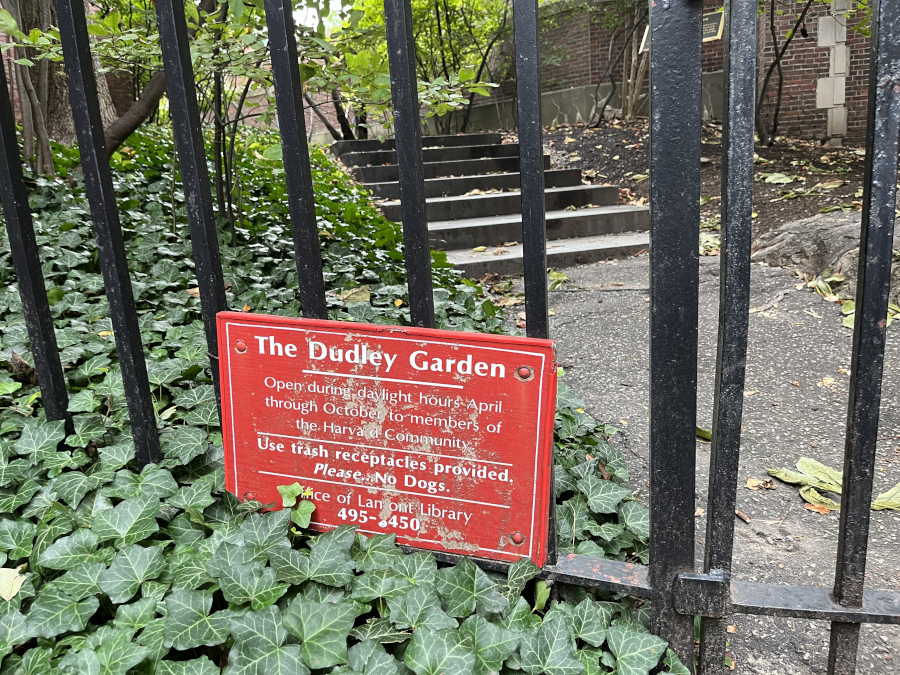
Here's the sign for the garden.
Here's what we didn't get to see.
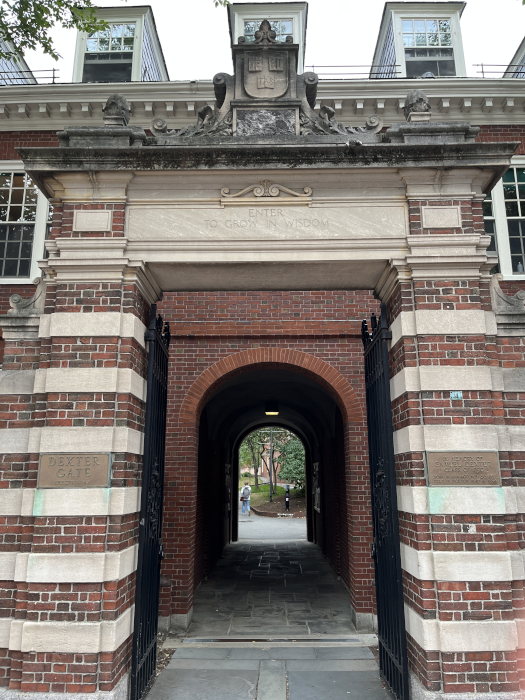
This is the gate we went through to get on to campus - Dudley used to have a gate too, but it was renamed.
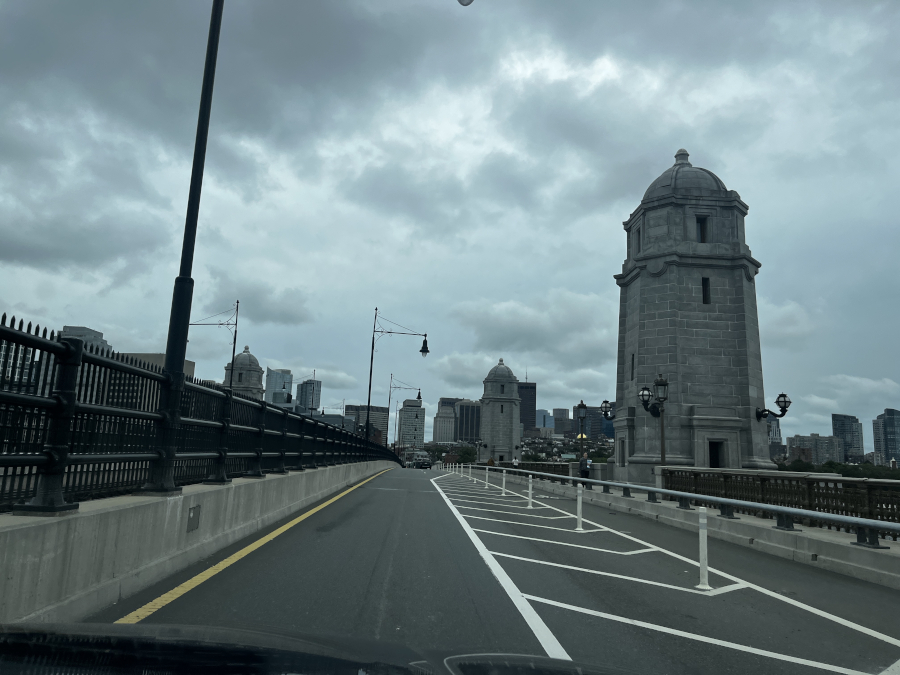
Driving across Harvard Bridge.
Beacon Hill is a very nice neighborhood, and it is very old. We learned on the tour that the south side of the hill was where the rich people lived, and the north side of the hill was where the working class and poor people lived - many of whom worked for the people on the south side. The north side was also a predominantly black neighborhood. The other fun thing is that just like Fort Ticonderoga, the neighborhood was originally built mostly of wood - especially on the north side. The wooden buildings were replaced with brick over the years as it conveyed more status.
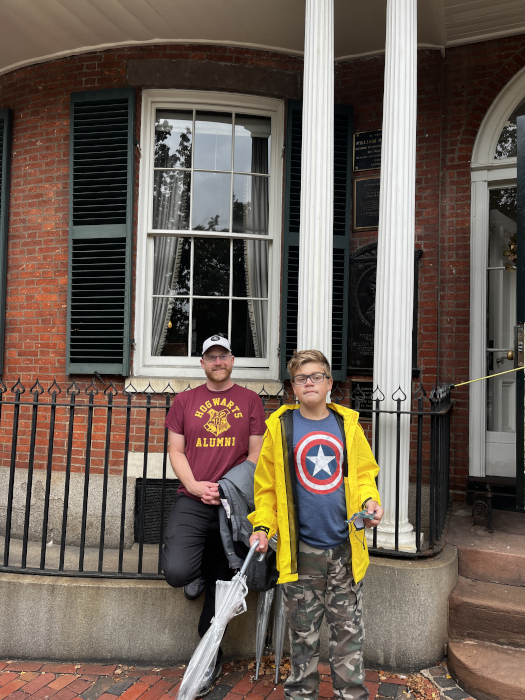
Waiting outside the Prescott House for the tour to start.

They had a Napoleon statue!

Fun fact: a huge part of Boston is built on landfill - over the years three hills were lowered and the dirt used to fill in parts of the bay to create more land.
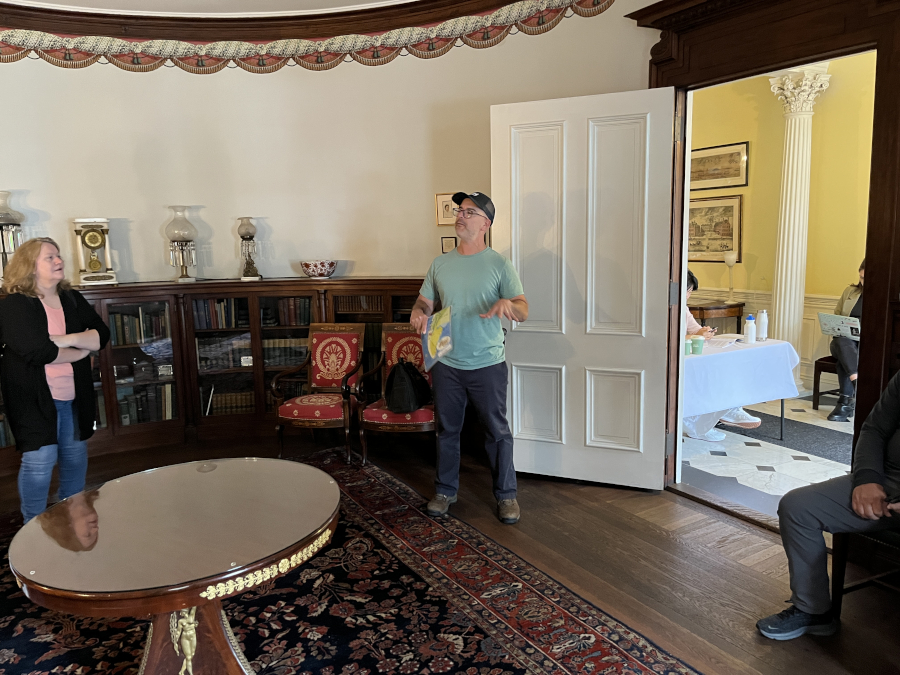
The guy by the door is Dave - he was our guide today and he was awesome.

We started out by learning that the Prescott House was once free-standing, but the other houses got built right next to it.
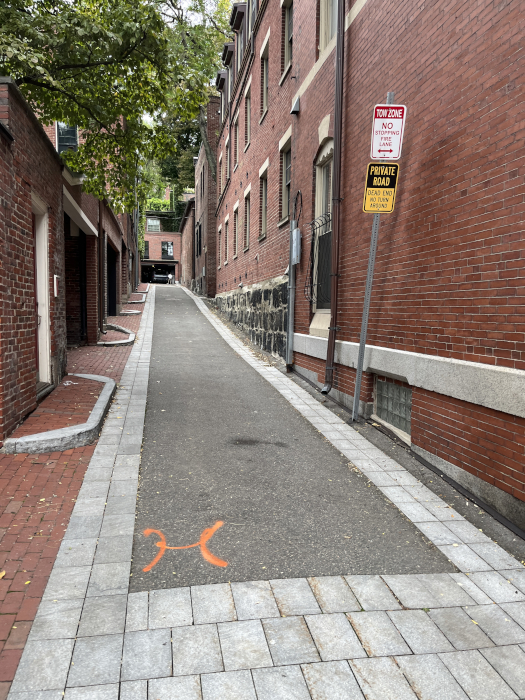
One of the many narrow streets we walked down.
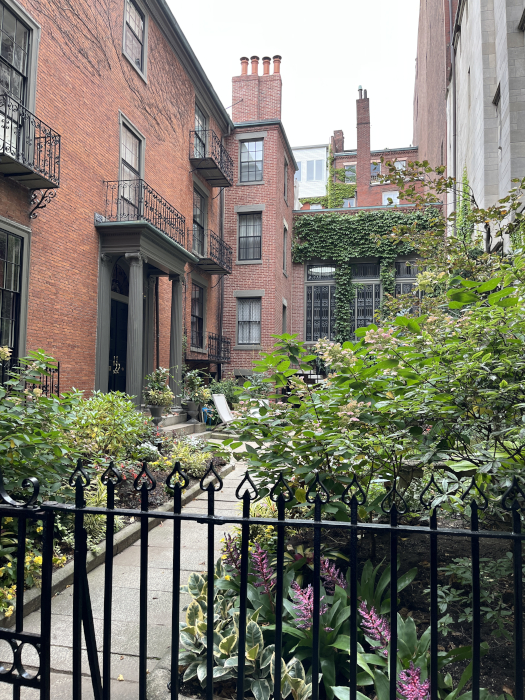
One of the nicest houses we saw on the tour - built where 80-100 feet of hilltop had been scraped away to fill in parts of the bay.
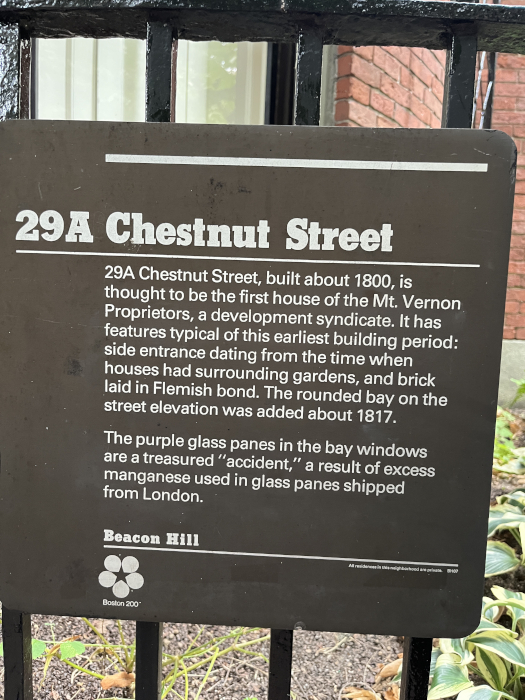
Here's some information about the house.
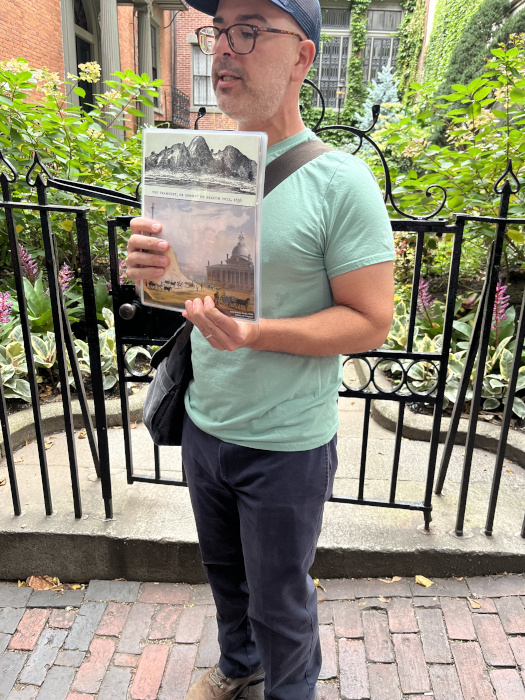
Dave is holding artist renditions of what the area looked like at first settlement (top), and after the first state house was built (bottom). His hand is covering the hill, but it is there.
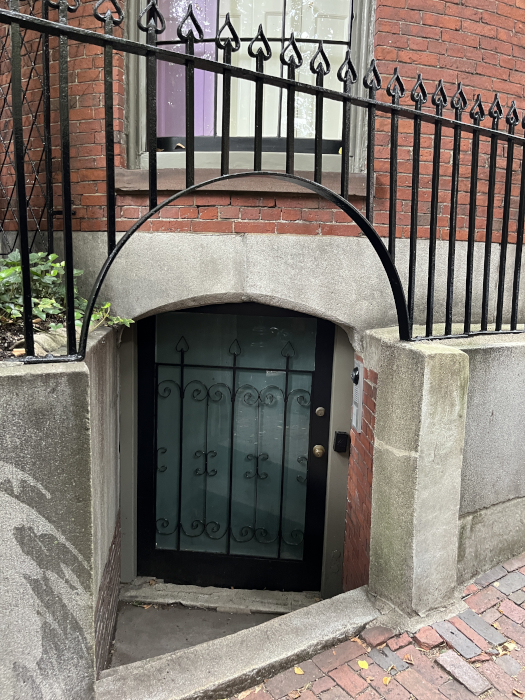
These cool little doors were all over the place. They are for tunnels that lead directly to the inner courtyards so deliveries did not have to go through the houses.

And then we got to Acorn Street.
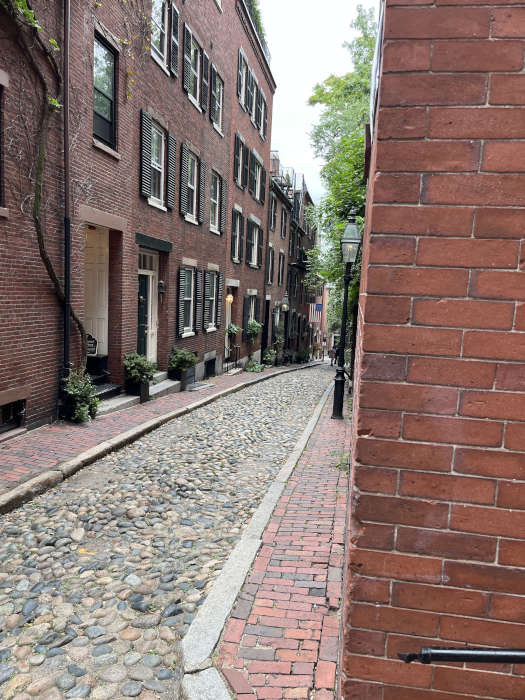
This is Acorn Street, which still has it's original stone surface from the 200+ years ago. It is one of the most photographed streets in America.
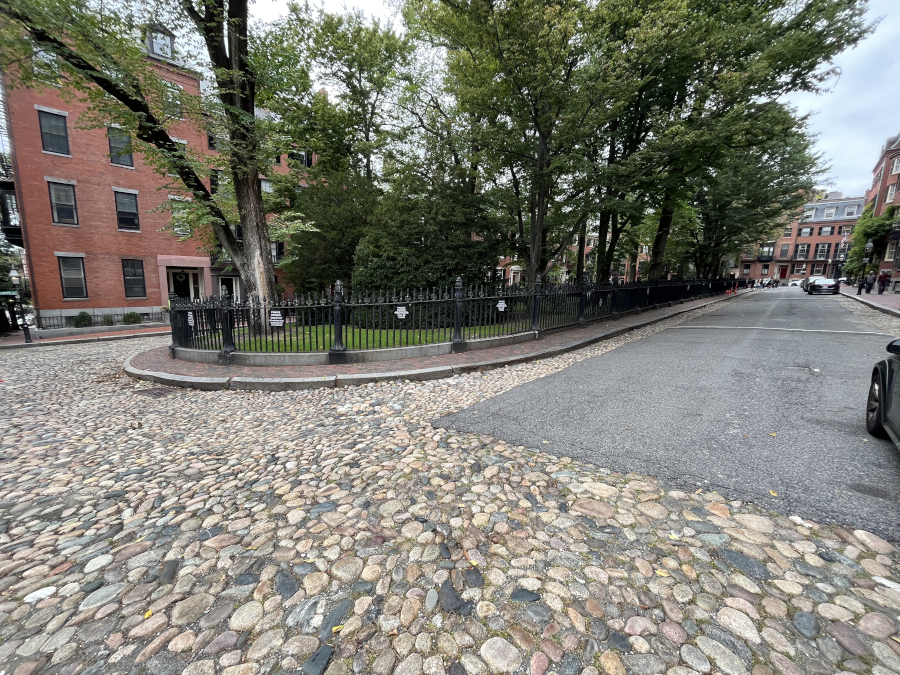
Forgot the name of this one, but there was a little oval-shaped park in this section. John Kerry, former Secretary of State lives on this street.

This door is full size, so it leads to a basement apartment.
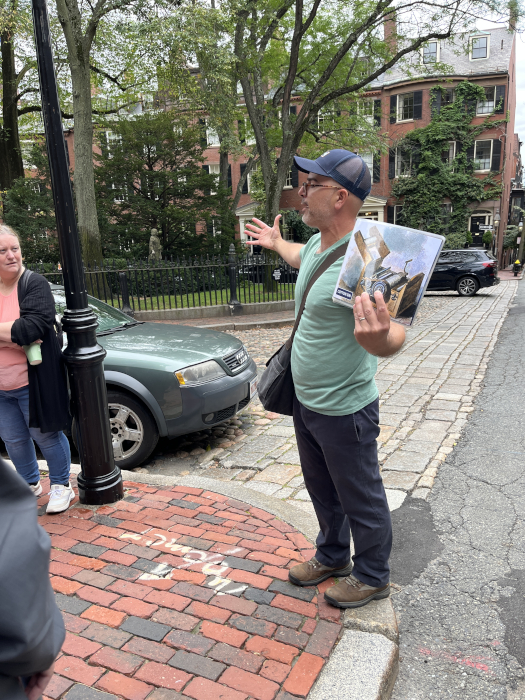
Dave explained how the money in the neighborhood was originally made from shipping, but later the wealth was from making cotton textiles. The wealthy Bostonians who were against slavery actually helped perpetuate it by providing a profitable market for slave-grown cotton processed by the cotton gin and the water loom, both of which made New England rich.
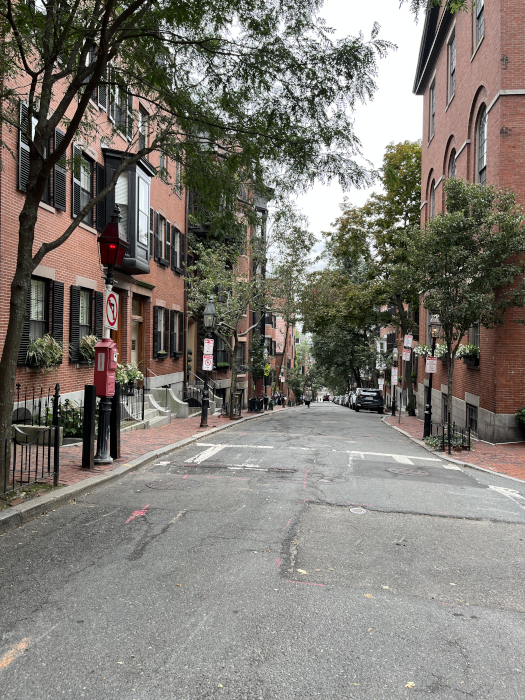
Another pretty street.
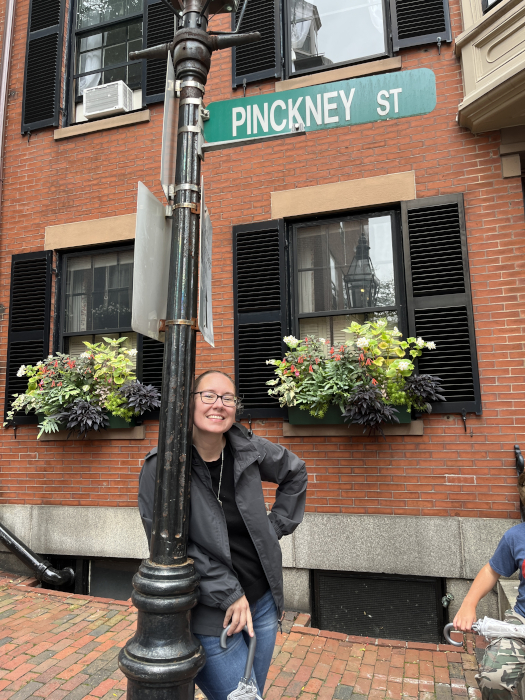
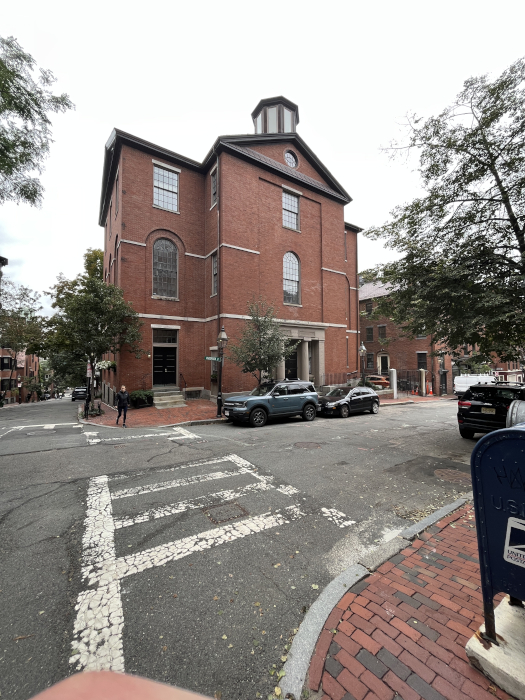
This was a Beacon Hill school house. Originally for whites only, it was integrated in 1855. For reference, the rest of the country didn't have integrated schools for another 100 years, after the Supreme Court's decision in Brown v. Board of Education of Topeka in 1954.
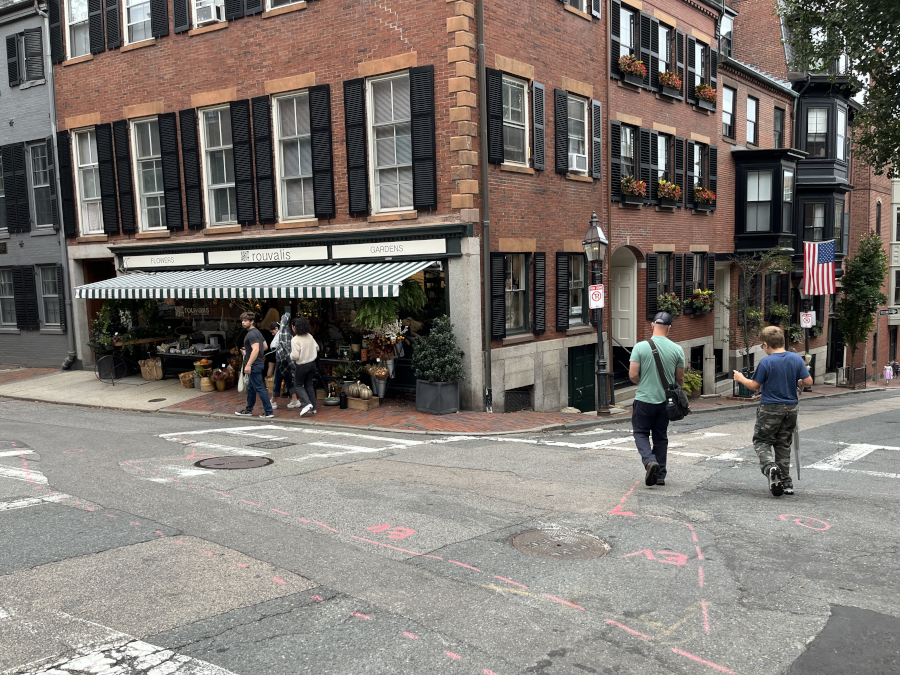
If you were wondering whether I stuck right next to Dave and asked a ton of questions - the answer is yes.

These streets are about eight feet wide - enough to accomodate a standard cart at the time they were built.

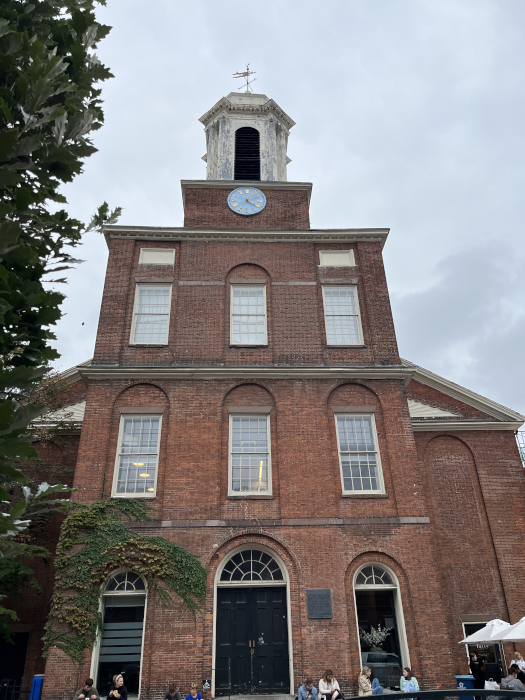
This is the Charles Street Meeting House, one of the first buildings to be erected on "new" land in Boston. Originally it was a Baptist Church - built right on the River Charles so the congregation could be baptised in the river right outside the door. At least until the river was diverted and the church was no longer on the shore.

Lewis Hayden had the best stories on the tour. Hayden was a fugitive slave who helped run the Underground Railroad. He hid many escaped slaves in his home. One time, slave catchers surrounded his house to drag him back to slavery. He let them in, holding a lit torch. Once they were inside, he locked the door and said: "I have three barrels of gun powder under the door and I will blow us all up before I will let you take me back. You have a choice: you can leave in peace, or you can leave in pieces." They left in peace.

Dave telling us stories about Lewis Hayden.
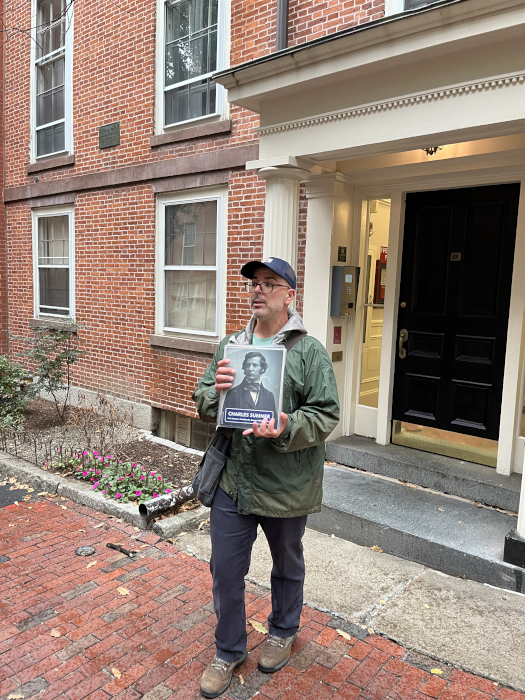
At the Sumner House. Charles Sumner was an abolitionist who was nearly beaten to death in the Senate Chamber while half of his colleagues cheered the beating! And you think politics are bad now.... He spent four years recovering from his split skull - but he never stopped fighting to end slavery.

Dave holding a picture of the beating from a newspaper.
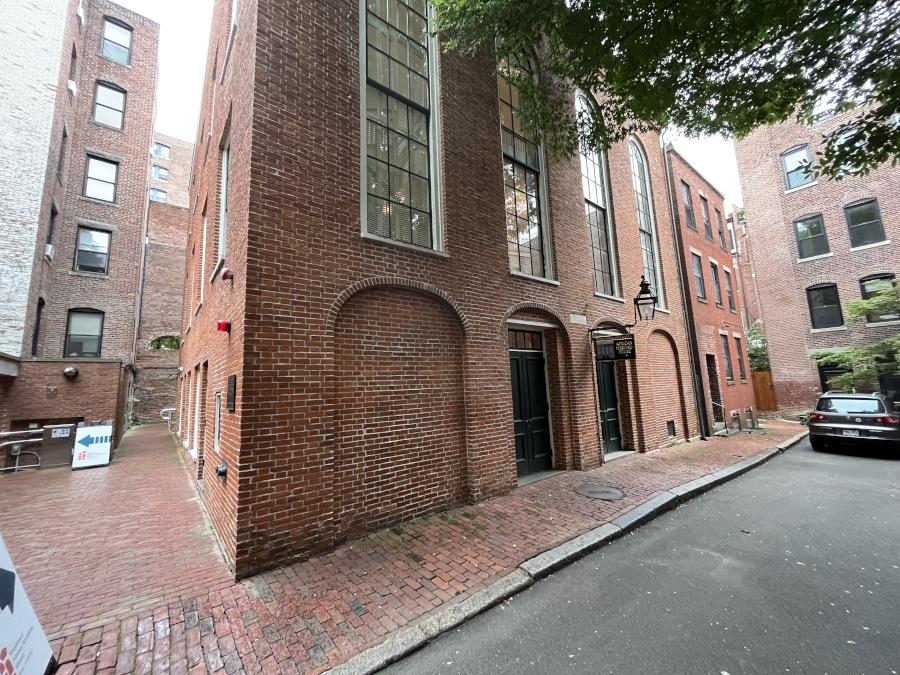
The African Meeting House, which housed one of the Black Schools on Beacon Hill, until they built a separate building next door. Famous activists for freedom like Sojourner Truth and Fredrick Douglass came to speak here.
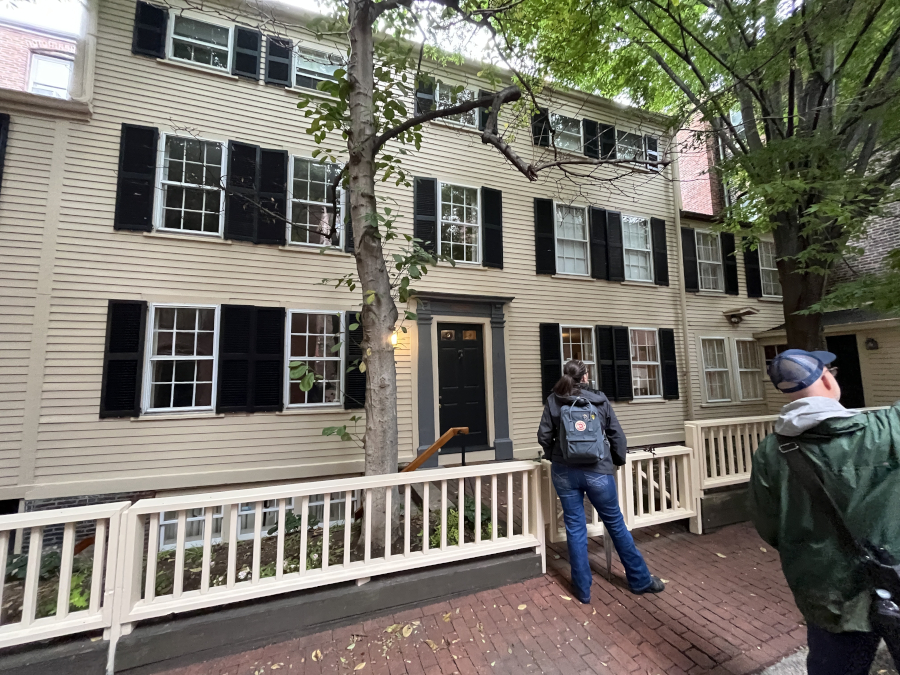
The William C. Nell House - Nell was one of the most brilliant young men in Boston, but was not recognized as such because he was black. He wrote for many years for The Liberator newspaper, crusading against slavery and segregation.

Super narrow alleyway - barely wide enough to walk through. This was part of the Underground Railroad, and used to sneak runaway slaves through the city without being seen.

One of many nice decorative doorways we saw.

The oldest house on Beacon Hill - the brick part was built in the middle of it.
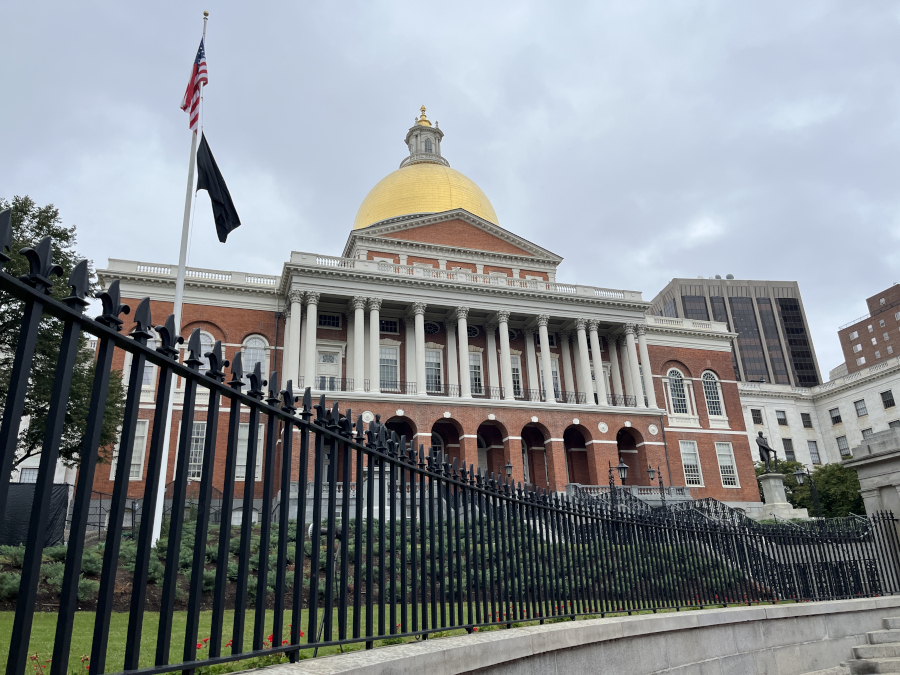
The Massachusetts State House.
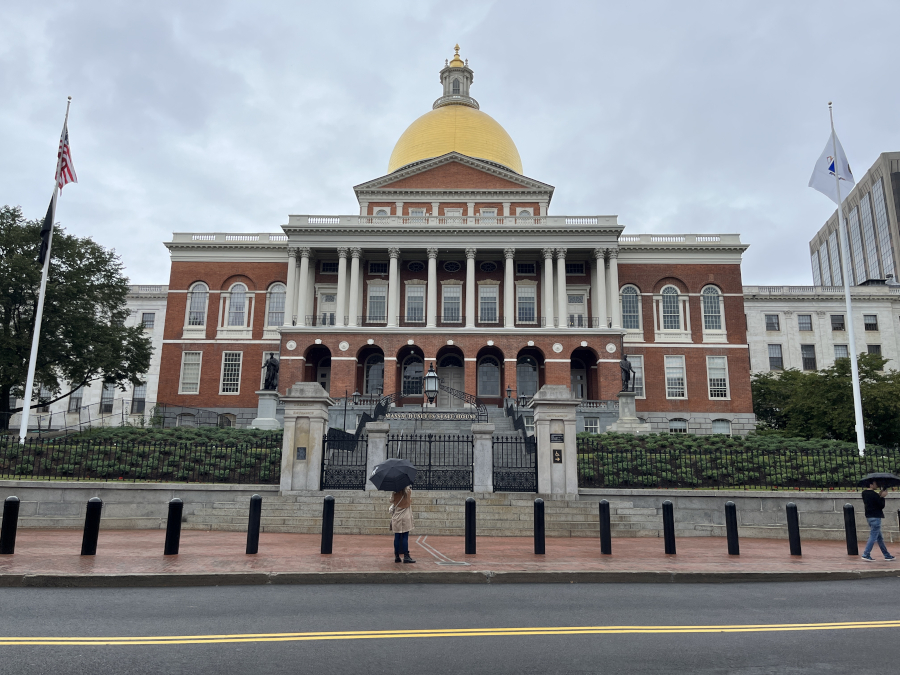
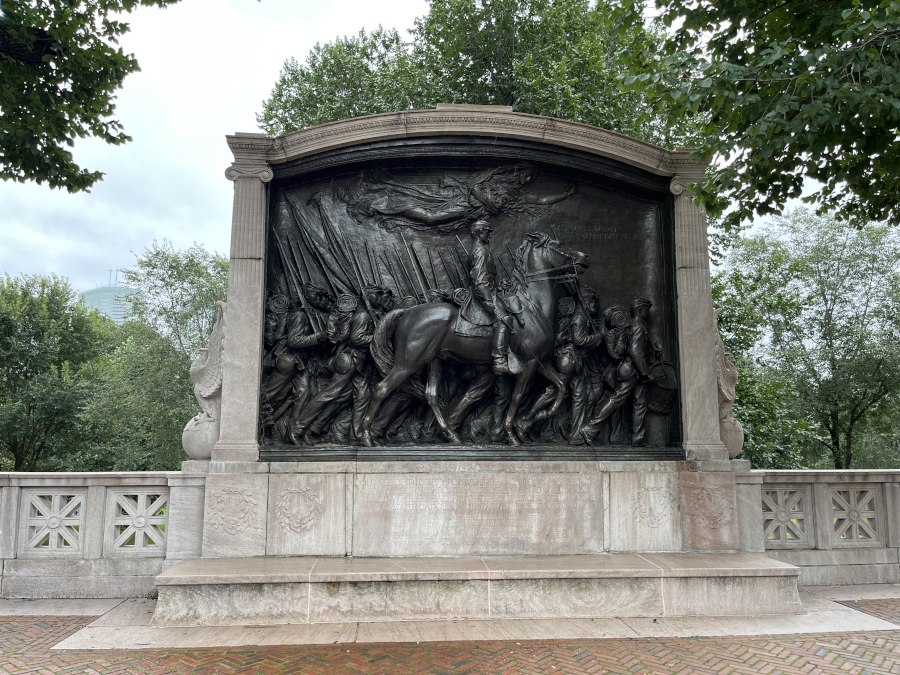
The highlight of the tour for me: The 54th Massachussets Monument. If you aren't familiar with the story, watch the movie Glory. The 54th was made up of 1,000 free black men and runaway slaves who volunteered to fight the Confederacy. They were first black regiment and the best-trained unit in the Union Army. They were also one of the bravest, distinguishing themselves in several battles, including the brutal assault on Fort Wagner.

Dave is holding a picture of the remaining members of the 54th at the dedication of the monument in 1884. The first black man to win the Congressional Medal of Honor was in the 54th - Sgt. William Carney, who carried the flag in the charge on Fort Wagner after the first color bearers were killed. He planted the flag on the fort, despite being shot several times, and held it there until he was rescued.
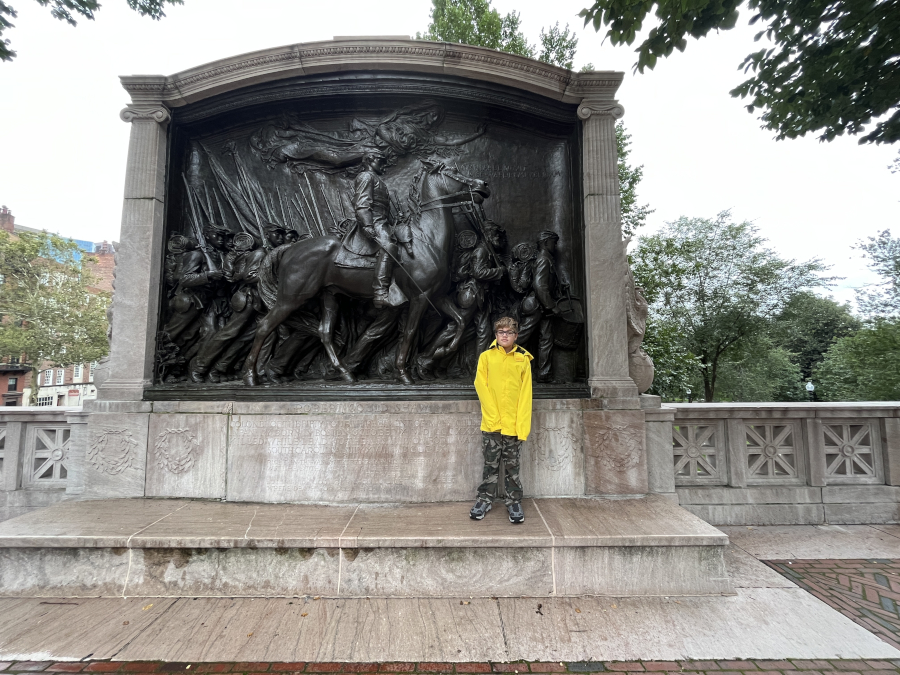
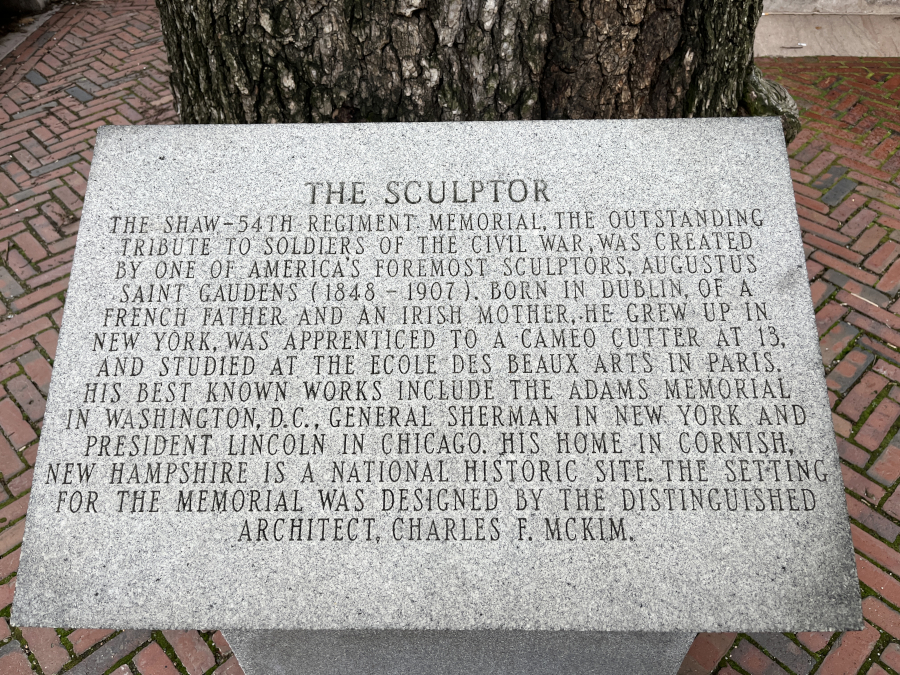
Information about the monument.
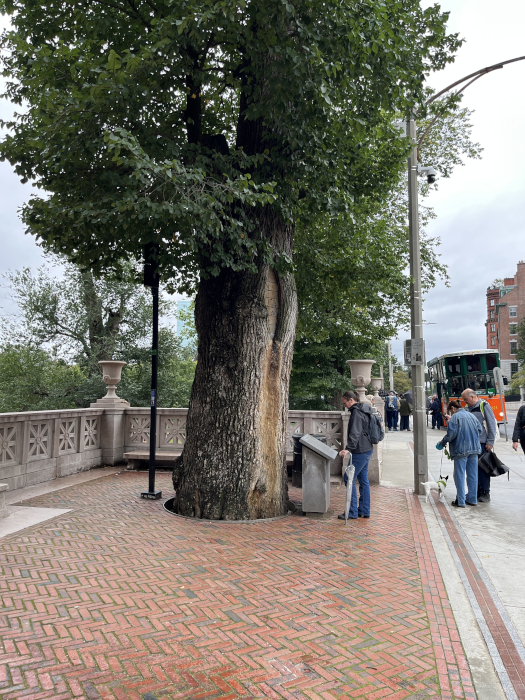
There are two living Elm trees on each side of the monument - they were planted in 1780 by John Hancock, who used to live across the street from where the monument is now. An arborist visits them every week to make sure they stay healthy.
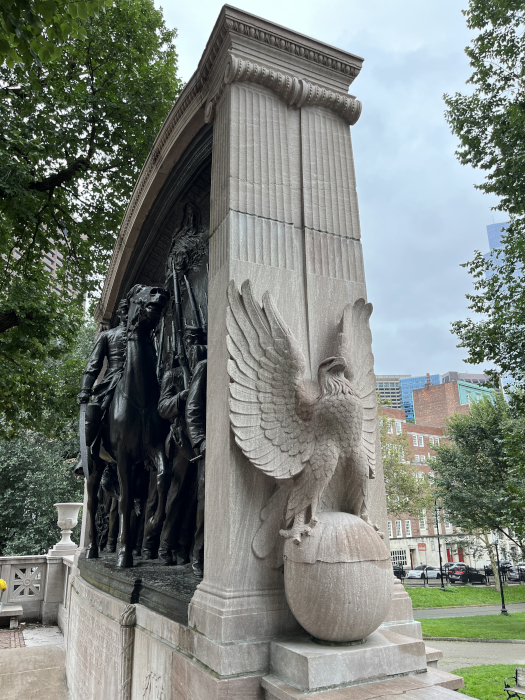

This is the back of the monument, mostly names and a dedication to the soldiers and the officers.
The tour ended at the 54th Monument, and I reluctantly said goodbye to Dave. From there, we did a little sightseeing on our own. We walked over to Trinity Church and the public library building.
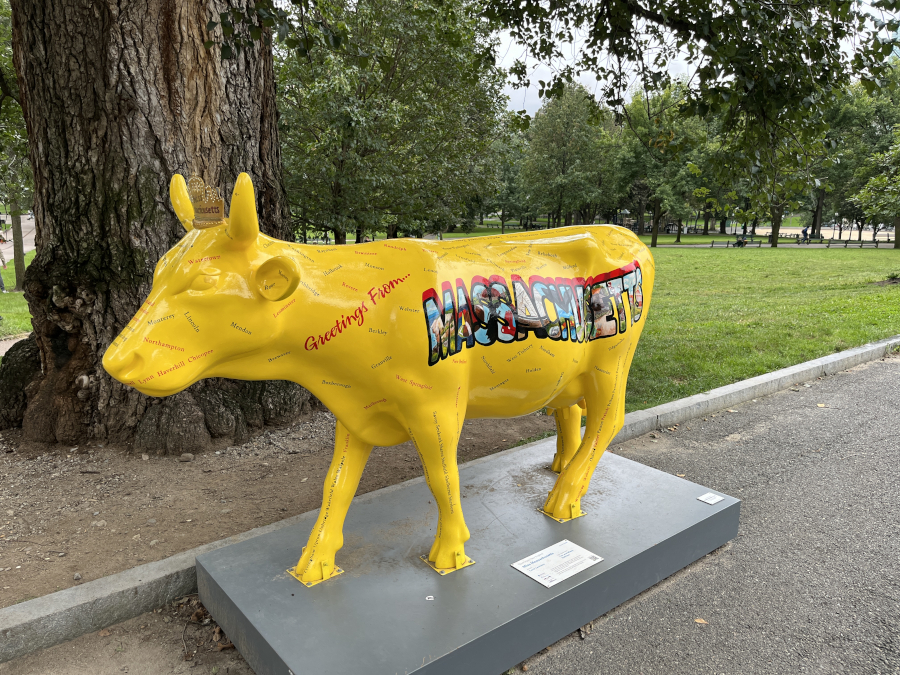
There are still cows on Boston Common!
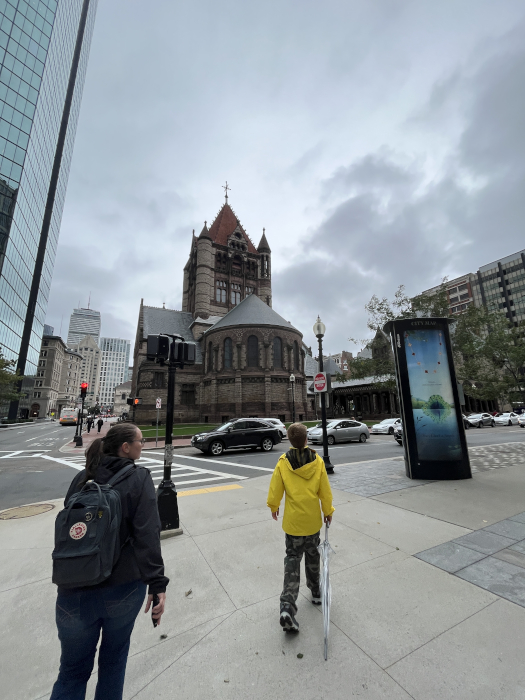
Trinity Church.
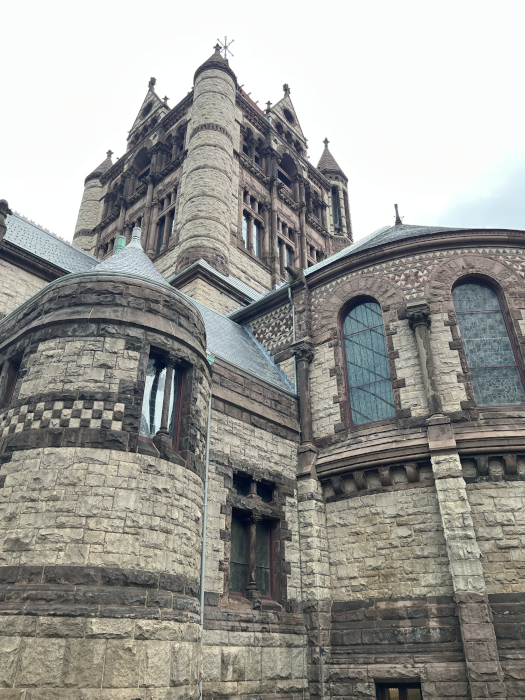
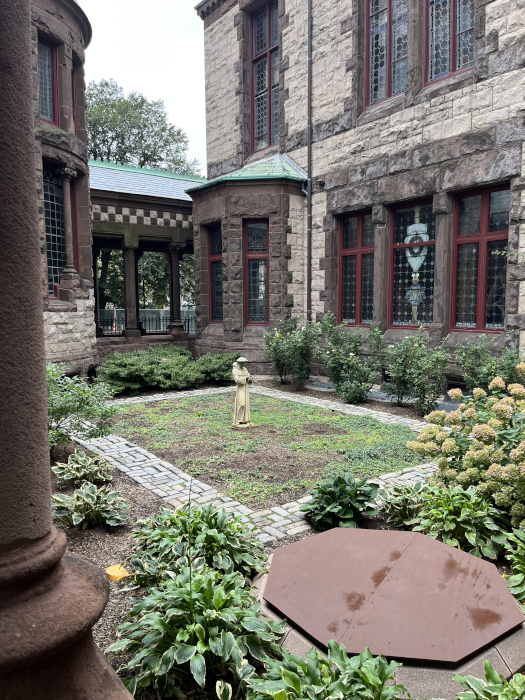
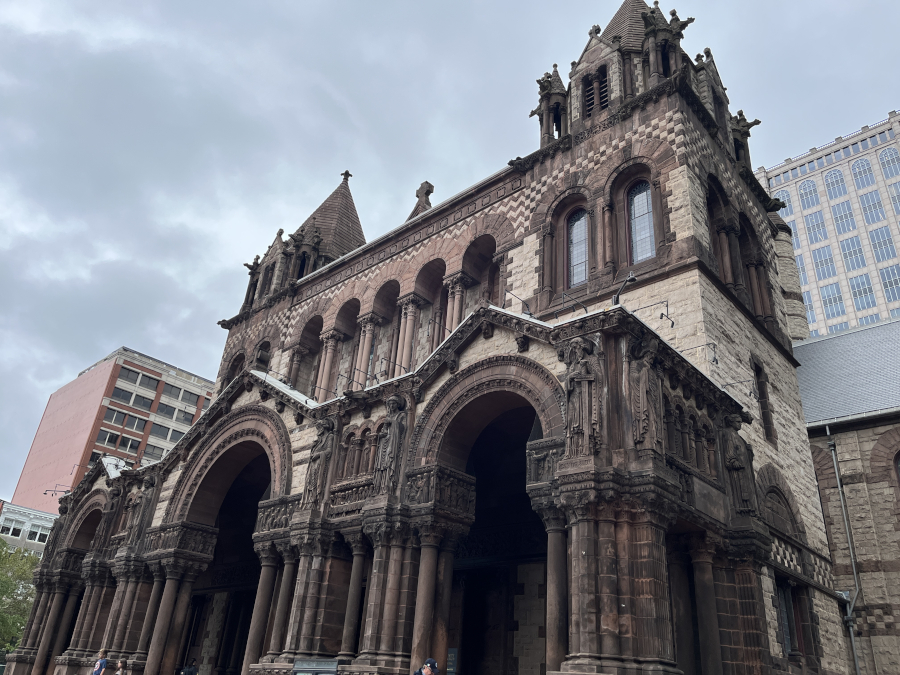

The Boston Public Library
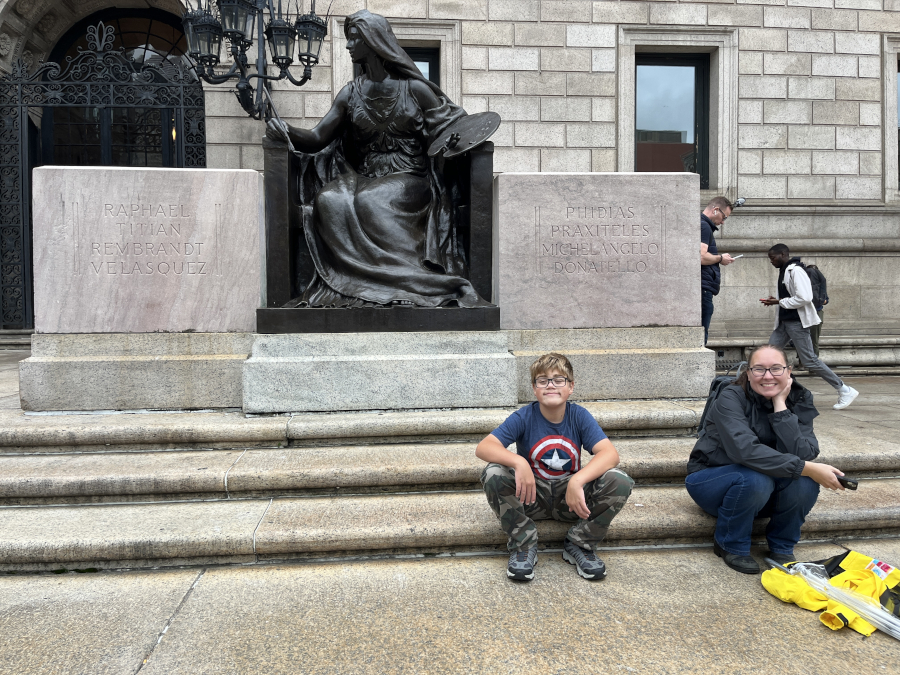
In front of the library.

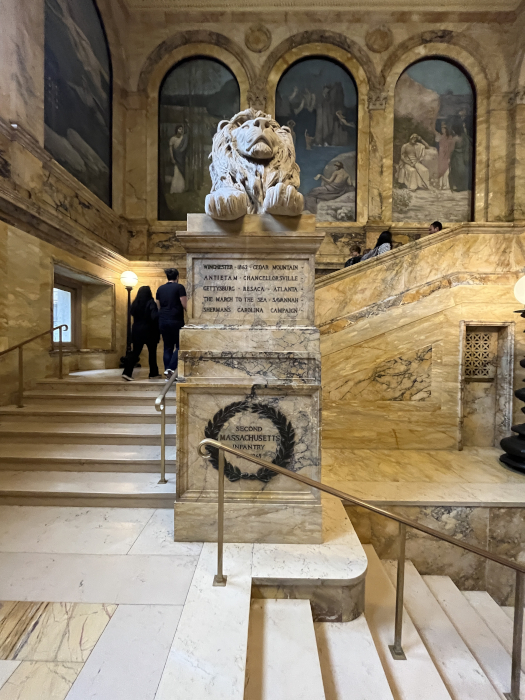
A memorial for the 2nd Massachussetts from the Civil War.

And one for the 20th Massachusetts.

One of the many amazing paintings in the building (too many to take pictures of them all).
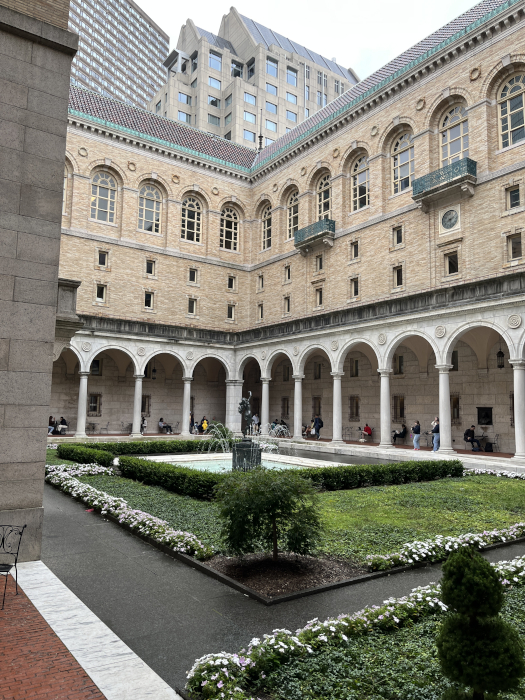
The courtyard.
From the library we headed back home. Dad liked the library, but he said he felt a little sorry for all the people who actually wanted to use the library, since all of us tourists were wandering through just to have a look.
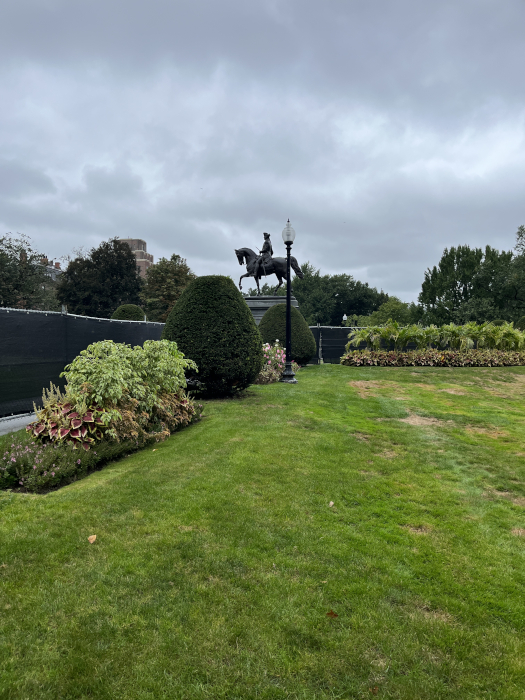
Not the best shot of the Washington statue in Boston Common Garden, but the best we could do under the circumstances.
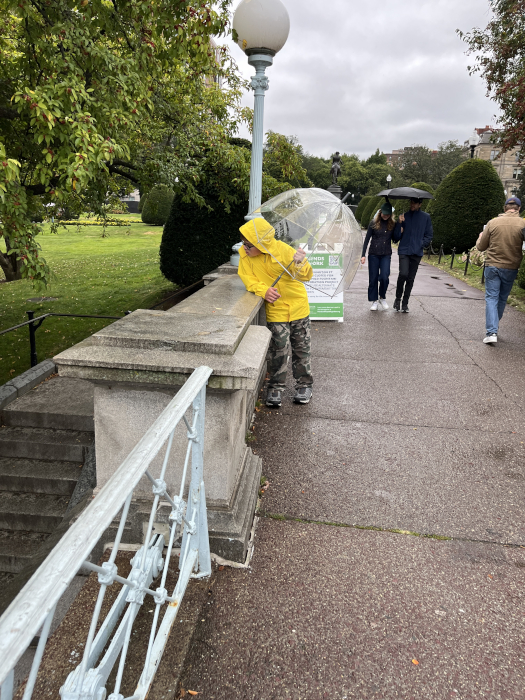
Checking out the ducks after a long day fo walking on tired feet.
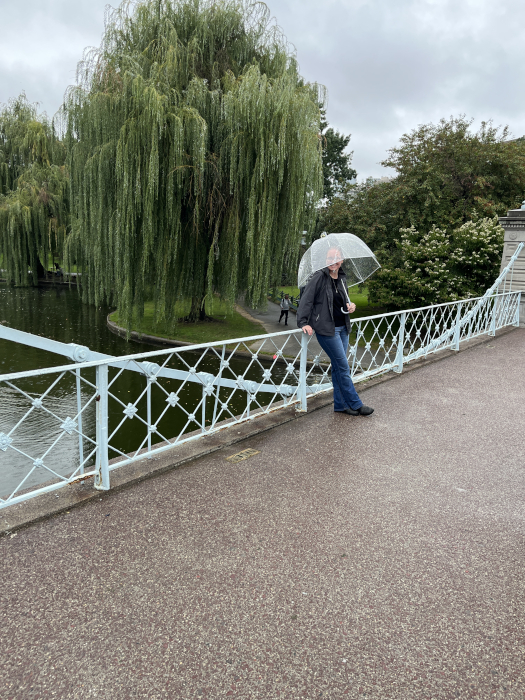
Mom on the bridge - kinda hidden by her umbrella.
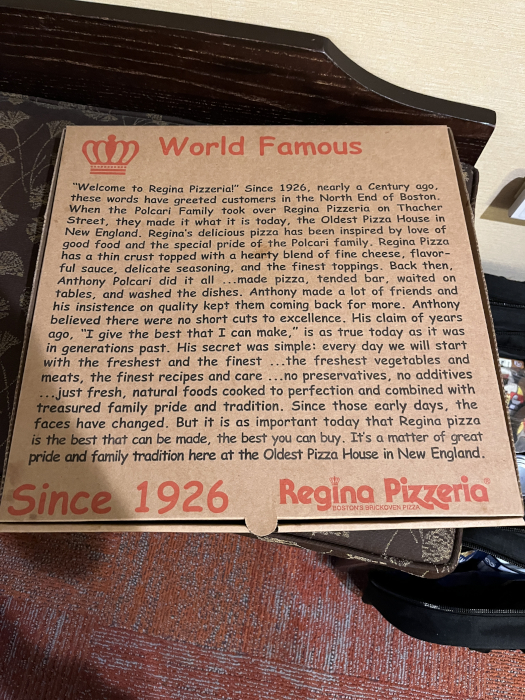
Pizza for supper. We missed this last night because traffic was so bad.
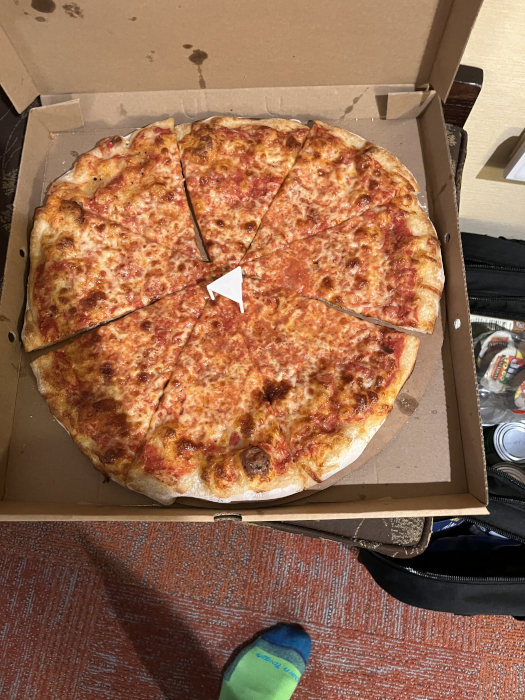
This isn't going to become a food blog - but this pizza was awesome! Second great local place we've found on the trip (the first was Mark's in Victor, New York).
What a great day! We learned a lot, and we barely got wet! The forecast was for heavy rain most of the day, but that diminished through the week and we barely saw enough rain to use the umbrellas.
The drive back to the hotel was better today - I mean, the other driver's were still terrible and the signs and road markings were absent or confusing - but it only took 45 minutes instead of 90. So that's an improvement.
That's all for now! Thanks for reading!